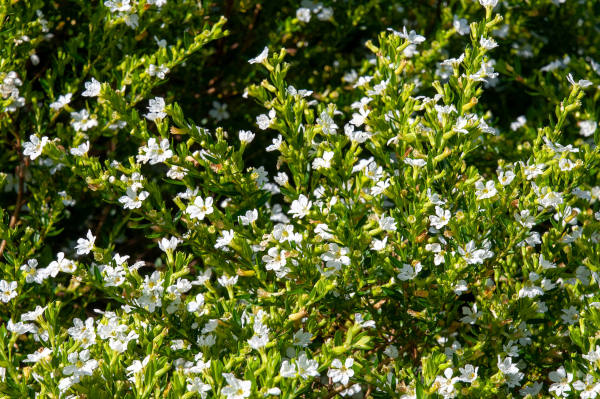How to grow Diosma
Native to the Cape provinces of South Africa these frost tender, evergreen, loosely rounded shrubs.
There are 28 species within the genus of Diosma from within the Rutaceae Family. Most species are unavailable with in the U.K.
Diosma are within the same Rutaceae family as citrus plants such as oranges, lemons and most are not available in the UK.
Their foliage is aromatic small and linear- think soft pine needle like. Large numbers of small 5 petalled star-shaped flowers are carried at the end of wiry stems from late winter to spring.
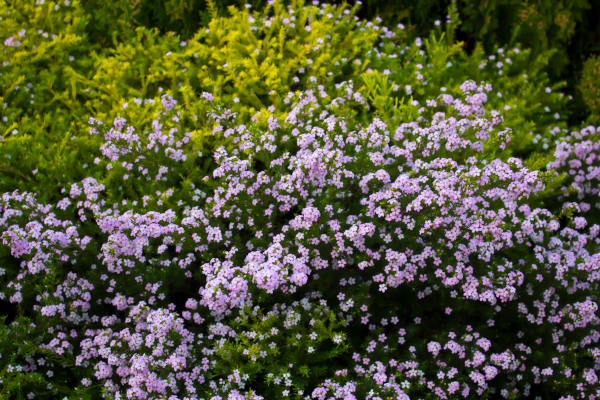
Zantedeschia is a genus of flowering plants from the family Araceae and is native to southern Africa. With a rich history dating back to the Ancient Romans, these deciduous or semi-evergreen perennials have been used as a symbol of celebration. Zantedeschia was Named after Professor Giovanni Zantedeschia, an Italian botanist.
There are two main forms of Zantedeschia: hardy and tender. Hardy forms of the plant can be grown outdoors, enjoy moist soil and full sun or partially shaded conditions - these are known as Arum lilies. Tender forms of Zantedeschia prefer being grown in containers or pots and should be brought inside over the winter - these are known as Calla lilies.
With tuberous flora in all colours from whites, yellows and oranges to deep reds and purples, Zantedeschias are not to be overlooked in any garden, as long as they have sufficient sunlight to grow in.
Ready to learn more about growing Zantedeschia? Read on for all there is to know...

Key Information
Soil pH
Position
Hardiness

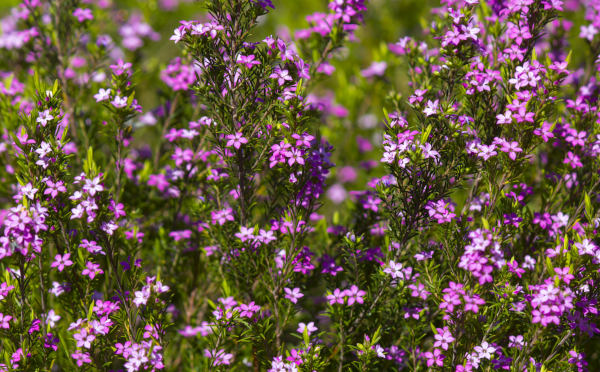
Where & when to plant Diosma
Position - Full Sun, Sheltered location. Protect from frost.
Soil - Free drained humus-rich soil, acid – neutral -not chalk.
Flower - Late winter to early spring
Hardiness - HARDY – cold winter (H3/ 1°C to -5°C). Hardy in coastal and relatively mild parts of the UK.
Diosma can be planted all year around when purchased grown in pots although I’d recommend that this slightly tender plant is best planted in its active growing season. Apil – June so it has established before winter.
When planting container grown plants during the active summer growing season make sure that they are watered regularly until the plant has settled into its new location. Water at soil level rather than the foliage.
Diosma prefer sheltered sites in full sun with free draining soil. They are ideally planted into cottage and informal garden styles, wall side borders, rock and low maintenance gardens.
As diosma are frost tender plant into a patio container which can be moved into a frost free cool, well-lit location indoors to overwinter in sites where conditions are not favourable.
Preferring loam or sandy soil, giving free draining properties, the use of ericaceous compost mixed with a soil based John Innes compost is ideal to give a slightly acidic pH.
How to plant Diosma
- For planting in the garden, dig the soil area removing any large stones and weeds and breaking up any lumps. Mix in some organic matter, ideally leaf mould, though manure or garden compost are also fine. Rake level and firm with your heels. Rake level again.
- Water plants well and allow to drain before planting.
- A good tip is to dig a hole twice the size of the root-ball. Fill with water and allow to drain before placing in the plant which is especially good for summer plantings.
- Remove the plant from its pot placing the plant in the hole, ensuring the top of the root ball sits level with the surface of the soil. Too low and the plant may rot, too high and the roots can dry out. If bare root hold the plant at soil surface level allowing roots to dangle into the hole.
- Backfill with soil and firm in gently with your foot.
- Soak soil well with water.
- Mulch around the base with well-rotted organic matter.
- For planting in containers, first choose an appropriately sized pot around 5-7cm larger than the rootball of your plant (you’ll need to gradually increase the pot size every few years). Always ensure there are plenty of drainage holes in the bottom.
- Use a good quality potting compost if you have it and mix with garden soil. Mix in some horticultural grit and, if not already present (check the labelling on the bag) some slow-release fertiliser granules. – Ericaceous compost and slow release feed would be suitable too.
- Start by partially filling the pot with compost; enough so that when placed on it the upper surface of the root ball is about 3cm lower than the top of the pot.
- Fill around the plant with compost, firming down with your fingers then adding a little more so it is held tight.
- Pick up the container and lightly tap on the potting bench or ground a few times to help further settle the compost around the plant.
- Soak well with water.
- A mulch with horticultural grit will look attractive and help to prevent a ‘cap’ or crust forming on the top of the compost (something container plants can suffer due to the artificial nature of their watering).
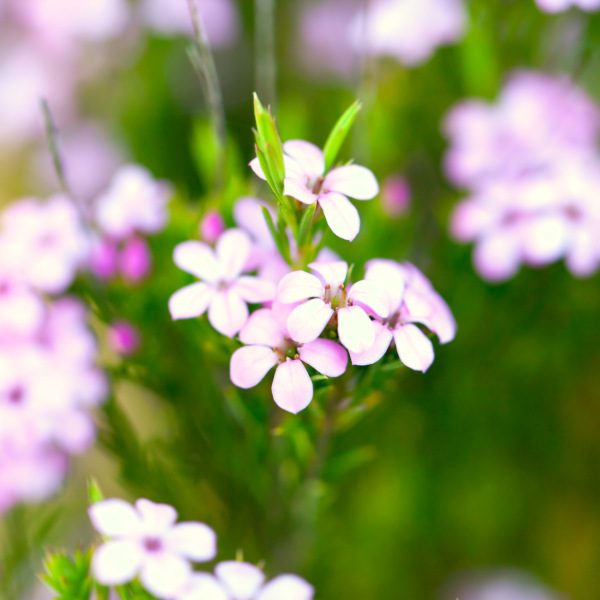
What to plant with Diosma
Outdoors, plant alongside plants with different shaped or coloured foliage as a contrast. Try Alstroemeria, Camellia, Ceanothus, Clematis, Ferns and Grasses, Hardy Geranium, Roses, Narcissus (Daffodil) and Viburnum.
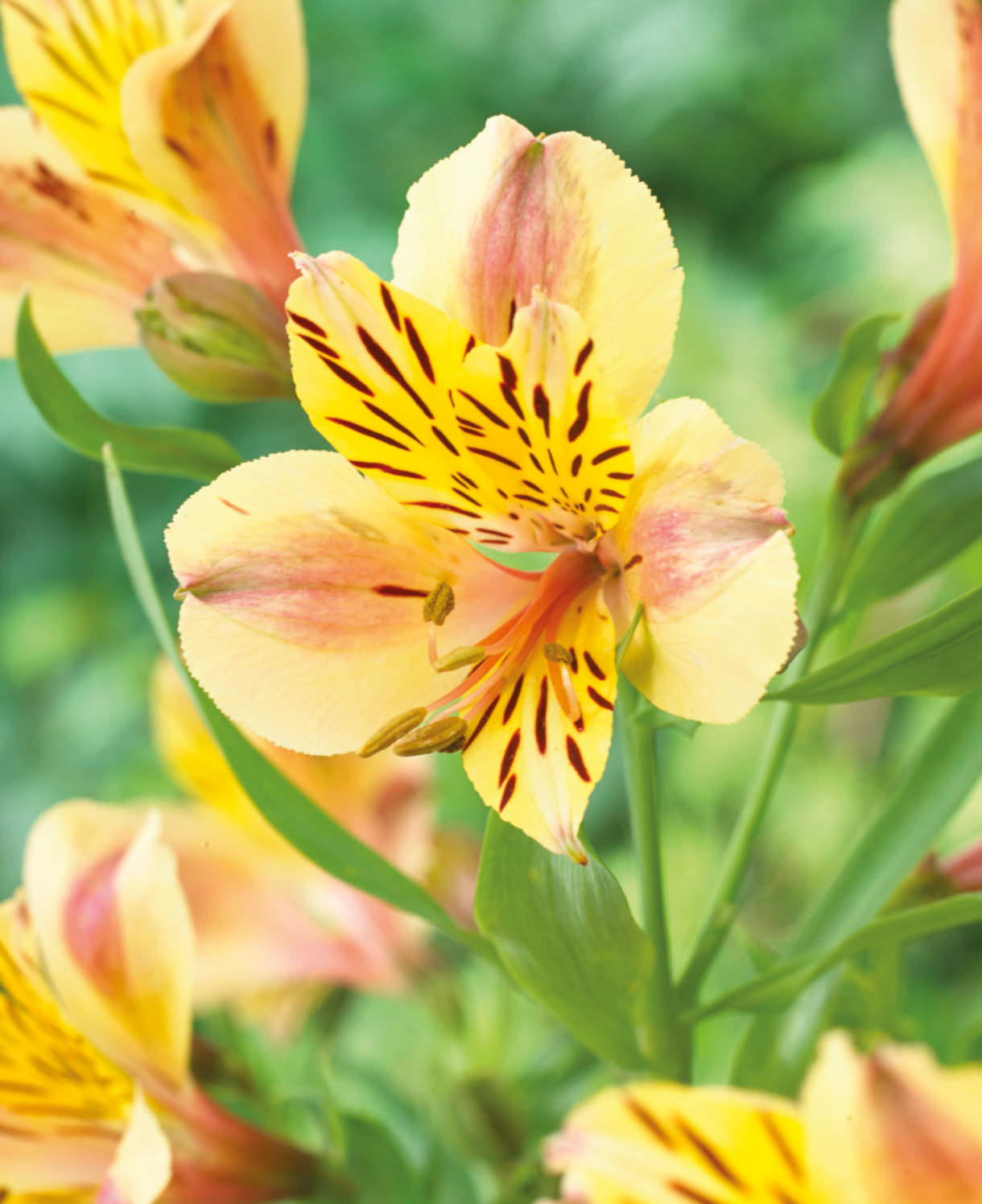
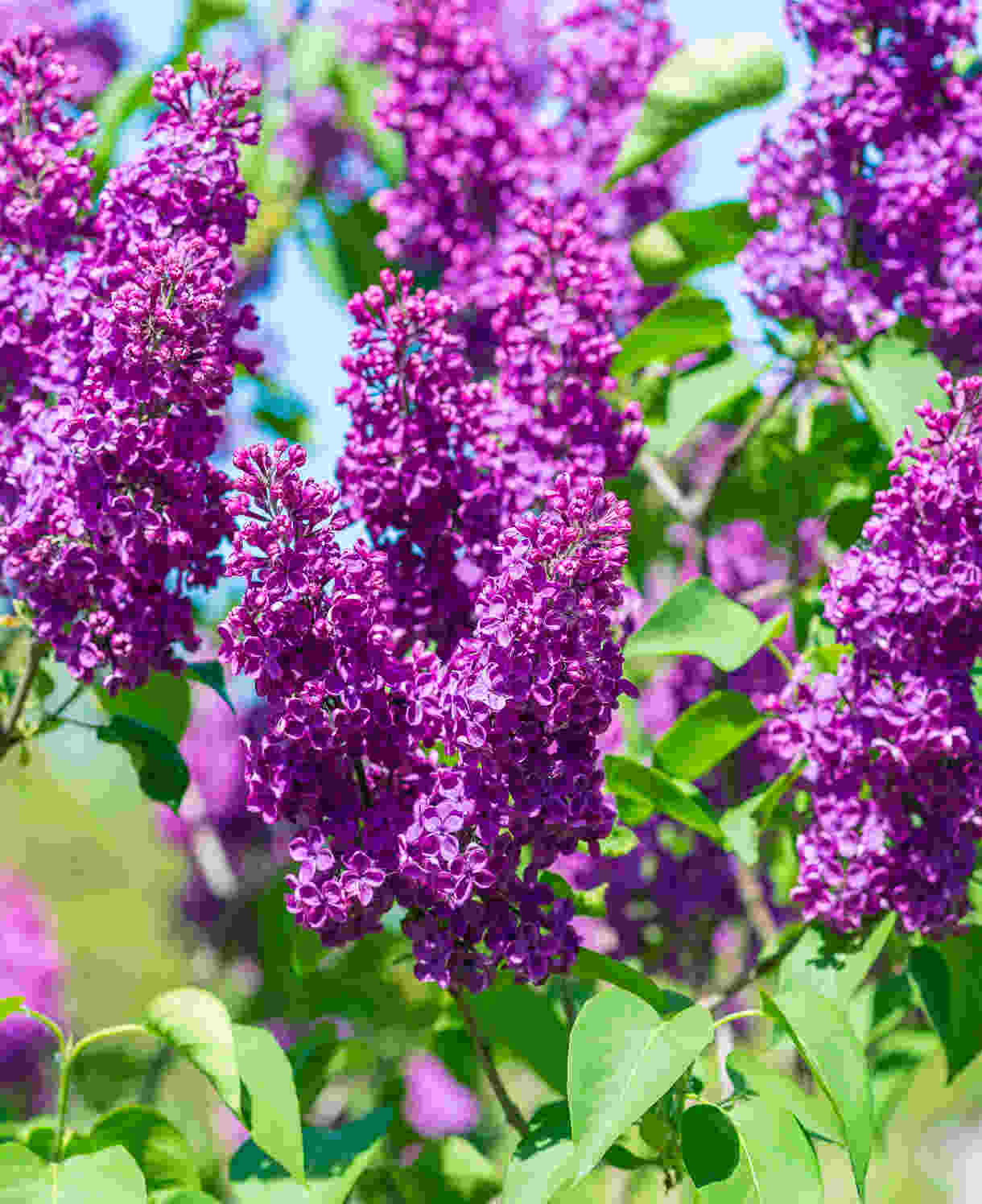

How to care for Diosma
Pruning and Deadheading
Diosma are easy care garden plants falling into RHS pruning Group 2. Prune immediately after flowering has finished by shortening flowered stems to maintain a compact plant habit.
- Where there are many stems remove some to ground level to keep the bush open and avoid congestion.
- Finally take out any weak, spindly or twiggy shoots right to the point of origin or to ground level so the plant concentrates its resources on strong new shoots that will bear the best flowers next summer.
Watering
Diosma enjoy moist yet free drained soil. On planting outside, they benefit from a good watering in on planting and then regular soakings until established. After this they should need watering only in very hot, dry conditions. Allowing the top few centimetres to dry out between soakings is a good rule of thumb to avoid overwatering. To check this, wiggle your finger down into the soil until you hit a cool, damp bit.
If planted in a container water more frequently during active growth. In autumn and winter reduce watering significantly watering only when soil feels dry.
Feeding
On healthy, fertile soil, a mulch of well-rotted organic matter (i.e., a layer of leaf mould, manure, or garden compost applied to the soil around the plant) should provide enough nutrients for your diosma. This has the added benefit of suppressing weeds and locking in moisture. Mulch when planting, and then again each spring.
If you garden on poor soil or your diosma looks in need of a boost, applying a granular general purpose feed or Ericaceous feed to the surface of the soil. Lightly working the granules in can reap benefits. This is known as a top dress and should be done when you’re mulching in spring – first apply the feed, then cover with the mulch.
Container-grown plants are different as they rely solely on the gardener for nutrition. Get off to a flying start by making sure you use a good quality compost with slow-release granules mixed in. These generally provide nutrients for around 6 to 8 weeks, after which you’ll need to apply a liquid feed every 2-3 weeks until the end of the growing season (i.e., September-ish).
Remember to repot your diosma every few years into a slightly larger pot using fresh compost. In-between, it’s worth removing the top few centimetres of compost each spring and replacing with a fresh mix of compost and slow-release granules.
Cold Protection
Diosma are frost sensitive garden plants. They can take a light frost so long as roots are dry. Cover with frost protection fleece if planted in the border. Or if grown in a container move to a well lit, yet cool greenhouse with plenty of ventilation.
Pests and Diseases
Diosma are generally considered problem-free.
How to propagate Diosma
The recommended way to propagate diosma is by semi ripe cuttings.
Semi ripe cuttings are selected from this seasons growth in late summer or early autumn. The base of the cutting should be hard, while the tip is still soft and flexible.
- Its best to take cuttings in the morning to avoid wilt. Choose stems that look healthy and free of pest and disease.
- Choose a non flowering shoot which is approximately 10-15cm long from its tip.
- Using a sharp knife trim below a node (leaf joint) Remove the lower sets of leaves leaving 2 to 4 leaves at the top.
- Pinch out the soft tip to just above a leaf joint and dip the base into rooting hormone powder or liquid.
- In a ready watered and drained pot level filled and lightly firmed with good quality ericaceous compost, make a hole for the cutting with a dibber. Insert the base of the cutting until the first set of leaves are just above the surface.
- In a 9cm pot you can put 3 cuttings in a triangular formation making sure the leaves are well within the edges of the pot.
- Cover with a plastic sandwich- like-bag to form a mini propagator is a good idea for the first few weeks. Hold the bag in place on the pot with an elastic band or string. Ensure the bag is stiff enough to hold upright above the plants foliage. The plastic bag holds in moisture keeping the humidity high which reduces the rate of water loss from the cutting, increasing the success rate of propagation.
- Place the pot on a saucer away from direct sunlight, yet in a light area that is around 18-24o
- At least twice a week remove the bag to allow some ventilation to the cuttings for 15 minutes. Check the soil surface feels damp.
- Rooting takes 2 to 4 weeks. Gently pull on one of the cuttings if it shows resistance then it is likely roots are forming. The bag can now be removed for longer periods of time gradually acclimatising the cuttings to their surroundings. (Hardening Off)
- Remove any dead or decaying material regularly. Increase ventilation to remove excess moisture.
- Once hardened off for 2 -4 weeks the cuttings should be ready for potting on individually. Carefully remove the plants from the pot as one root ball. Checking for signs of good rooting - if not ready leave to develop for few more weeks. Carefully separate each cutting ensuring a good portion of root is kept intact potting on into individual 9cm pots. Water well and leave to develop in a light sheltered environment until established.
* Many plants carry Plant Breeders Rights and cannot be propagated for commercial purposes.
Common Diosma questions
What do you feed Diosma?
Use either with slow release general purpose feed or ericaceous feed following the instructions given in the guide above.
Is Diosma a climber?
No diosma is a free standing garden shrub.
Is Diosma poisonous to dogs?
Diosma does not have any reported toxic effects.
